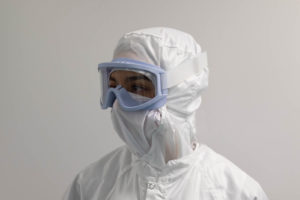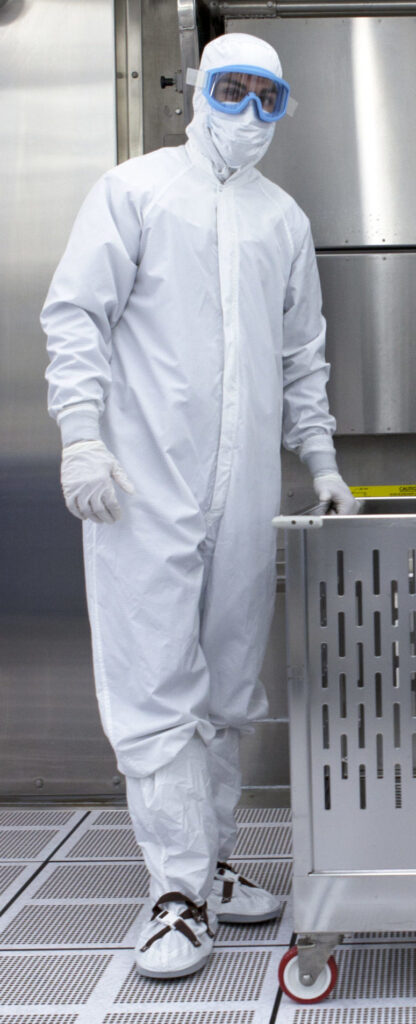Fabric Guidelines for Cleanroom Apparel

In a cleanroom, every single element must be carefully scrutinized to ensure that it does not pose a contamination risk. This scrutiny extends to the people who occupy and move about in the cleanroom—as well as the clothing they wear.
It’s likely that you already know that cleanrooms call for specialized apparel, but you may not be clear about what specific fabric characteristics this apparel should utilize. To dispel this all-too-common confusion, we offer the following brief overview of the kinds of fabrics used in effective cleanroom garments.
ESD Characteristics
Static electricity is a serious contamination threat in cleanrooms, especially ones that specialize in the manufacture or handling of sensitive equipment or substances. Although it’s widely recognized that static can harm these kinds of materials, it’s not sufficiently understood that static-generating clothing also has a habit of attracting microorganisms and other contaminants, which can then easily spread around the facility.
Consequently, it is essential that cleanroom apparel have electrostatic discharge (ESD) properties. More specifically, you should use static-dissipative or anti-static cleanroom garments.
Arc Flash Resistance

The arc flash is easily one of the most dangerous of all cleanroom hazards, capable of generating an electrical explosion that can reach 35,000°F. Any cleanroom that contains electrical equipment capable of producing an arc flash must mandate the use of apparel that is specifically designed for arc flash resistance.
High Density
Cleanroom apparel should be dense enough to prevent chemicals and bacteria from easily seeping through and reaching the skin of the technician. Heat resistance is another important quality that this type of fabric should be able to provide. The finer the fabric, the more densely it can be woven.
High Particle Filtration Efficiency
Because human beings are responsible for most of the contaminants that enter a cleanroom, it is vital to select garments with high particle filtration efficiency. This refers to the capability of the garment to filter out particulate matter produced by the wearer and prevent it from entering the cleanroom.
Non-Linting
Everyday clothing frequently sheds lint and particles. While this isn’t a serious concern for street wear, it poses a major problem for cleanrooms, as these tiny sheddings can contaminate the room. Cleanroom apparel made from continuous filament fabrics has far fewer loose ends that can drop off and compromise the environment.
Tear Resistance
This quality is especially important in the more strict ISO classes, where technicians generally must wear full-body uniforms. Even a tiny tear in these types of uniforms can mean disaster for a cleanroom because it allows microparticles generated by the wearer’s body to leak into the environment. For that reason, tear resistance is important.
As an additional note, it’s important to realize that the type of cleanroom clothing required is partly dictated by the ISO Class of the facility. An ISO 7 (Class 10,000) facility, for instance, is considerably more lenient in its clothing requirements than the ISO 4 (Class 10) cleanroom. Among other things, ISO 4 cleanrooms usually mandate the wearing of coveralls and goggles, while these items are generally unneeded in ISO 7 facilities.
Please explore our website to view the high-quality ESD cleanroom garments available from Prudential Cleanroom Services, an industry leader in uniform laundry services since our founding in 1960.